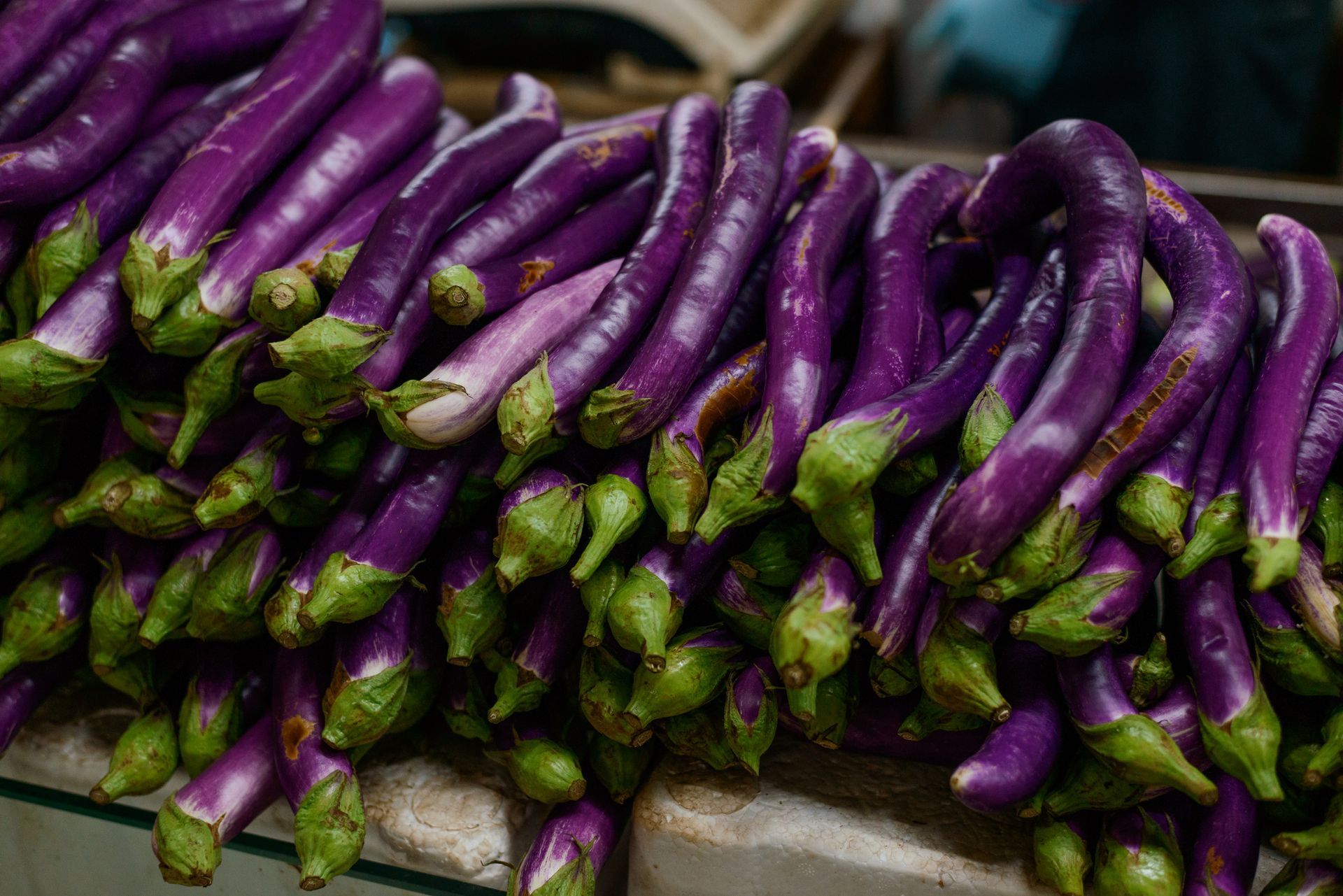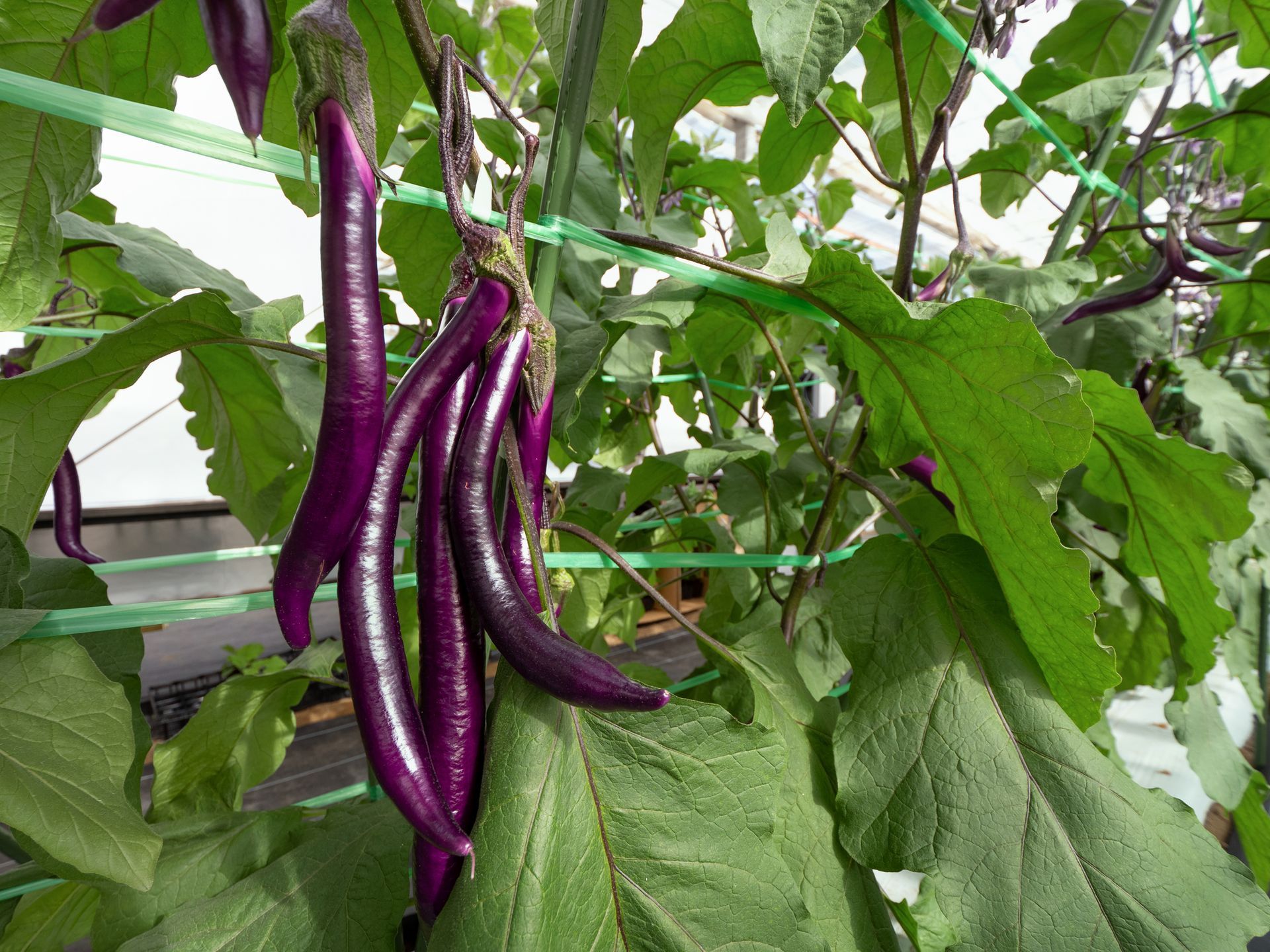CHINESE EGGPLANT
Chinese eggplant comes from a specific variety of Solanum melongena, a vegetable plant from the nightshade family, native to Asia. It is characterized by its long, slender, slightly curved shape and smooth skin ranging from pale violet to lavender. When mature, it can reach between 15 and 30 centimeters in length and remains more tender and less bitter than Western varieties. Its white to creamy flesh is soft, low in seeds, and not very spongy, making it ideal for quick cooking methods like stir-frying or grilling. Its subtle, delicate flavor is reminiscent of zucchini, with a slight hint of sweetness.
purchase guide
Look for those that are firm, shiny and smooth. They should have no blemishes or imperfections, and should be a bright violet color with minimal green at the stem.
OPTIMAL TEMPERATURE FOR CONSERVATION
10°C - 12°C for 4 to 7 days
Chinese eggplants should be stored in the refrigerator, either in a plastic bag or wrapped in a damp cloth, for up to one week. Be sure to keep them away from fruits or vegetables that produce ethylene, as it can cause them to spoil more quickly.
NUTRITIonal value
Chinese eggplant is low in calories and high in water, making it a light and hydrating vegetable. It provides fiber, potassium, as well as vitamins B1, B6, and K. Its skin contains antioxidants, including anthocyanins, which are beneficial for cellular health.
how to eat it
Chinese eggplants can be stir-fried, braised, roasted, or grilled. They are often used in vegetarian dishes and can be paired with garlic, ginger, soy sauce, and other savory seasonings.





